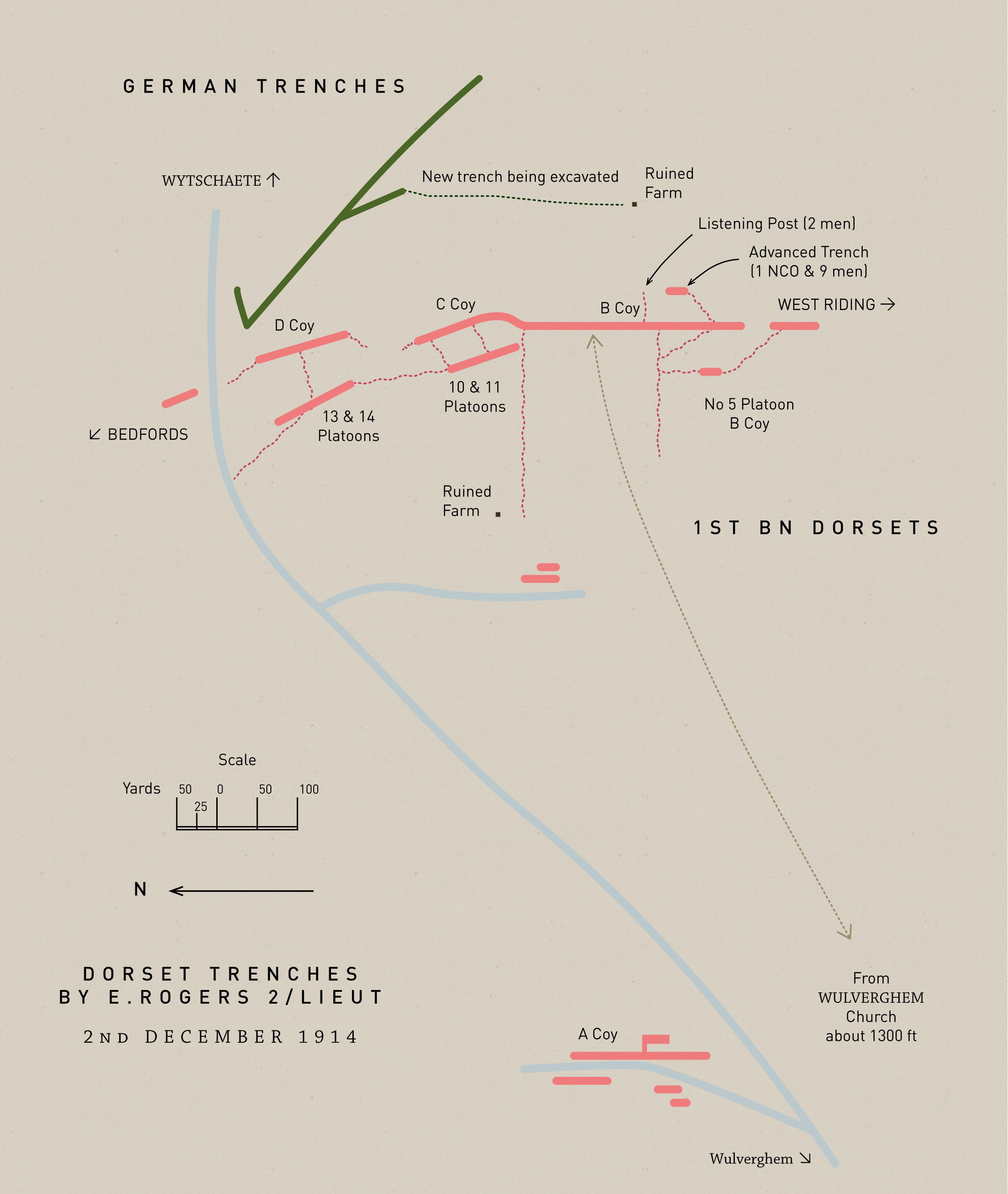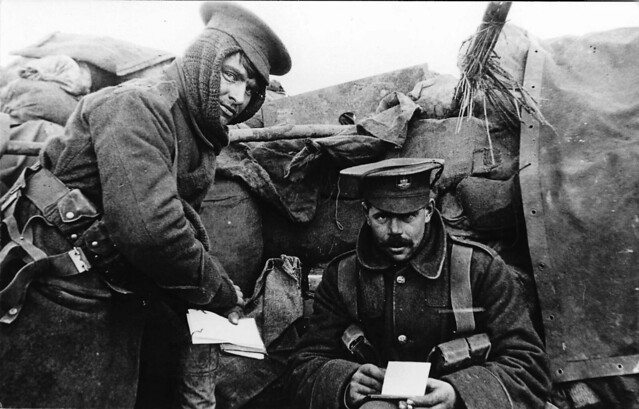12th January 1915
The clipped “situation unchanged” in the Dorsets’ diary sounds like a British Rail announcement and described, with economy, another day of monotony in the trenches.
The Dorsets’ Captain Partridge features in the 15th Brigade’s diary entry for today. He’s been busy with an unnamed Royal Artillery officer, sending intelligence back to Brigade HQ. Major General Thomas Morland’s report for the 5th Division bears this activity out the following day, with the line “observations from front trenches show the great value of powerful periscope binoculars.” Presumably Partridge was using something like this through which to observe the enemy lines:

One Dorset man died today, according to the CWGC: His name was Francis James Harwood and he was 34. Intriguingly, he served under the surname of Westlake. He’s listed as having been killed in action in the medal rolls. There’s also evidence that he served with the Somerset Light Infantry, which makes some sense as he was born in Bridgewater, Somerset. Quite why he’d transferred to the Dorsets is a mystery. It requires more time, and I have run out of minutes in the day, so I will leave poor Francis James alone and return to him another time perhaps.

